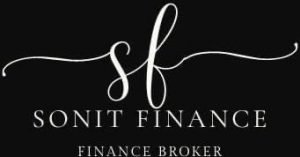Australian housing values are gaining momentum with falling interest rates driving renewed growth in the property market.
According to the latest Cotality (previously CoreLogic) Home Value Index, national dwelling values rose 0.6% in June, marking the fifth consecutive month of growth. The June quarter saw values increase by 1.4%, up from 0.9% in the first quarter of the year.
Cotality’s research director, Tim Lawless, said the February rate cut was a clear turning point for the market.
“The first rate cut in February was a clear turning point for housing value trends,” Mr Lawless said.
“An additional cut in May, and growing certainty of more cuts later in the year have further fuelled positive housing sentiment, pushing values higher.”
Despite the upward trend, current growth remains modest compared to previous cycles. The quarterly growth rate of 1.4% is significantly lower than the 3.3% peak recorded in mid-2023 and the extreme 8.1% quarterly peak during the height of the pandemic.
The housing rebound is occurring despite relatively low sales activity, with housing turnover through the first half of the year tracking at an annualised pace of 4.9%, slightly below the decade average of 5.1%.
Advertised stock levels remain tight, tracking 5.8% below the same time last year and 16.7% below the previous five-year average, creating a more balanced market for buyers and sellers.
Across individual capital cities, Darwin led quarterly growth at 4.9%, with dwelling values reaching a new record high, finally surpassing the mining boom peak recorded in May 2014. Perth and Brisbane followed with quarterly growth of 2.1% and 2.0% respectively.
The rental market has shown a notable slowdown, with the national rental index rising just 1.3% through the June quarter, the lowest Q2 change since 2020. Annual rental growth has eased to 3.4%, down from a peak of 9.7% in November 2021.
Mr Lawless put this down to affordability constraints despite consistently low vacancy rates.
“Rental affordability is a key factor keeping a lid on rental growth,” he said.
“Assuming the median rent and median household income, rental households are now dedicating around one third of their pre-tax income to paying rent.”
Looking ahead, several factors are expected to shape the housing market for the remainder of the year. On the positive side, interest rates are forecast to fall further, possibly to the early 3% or even high 2% range by year’s end, which should improve consumer sentiment and borrowing capacity.
However, affordability constraints, elevated household debt levels, and a cautious lending environment may temper growth.


